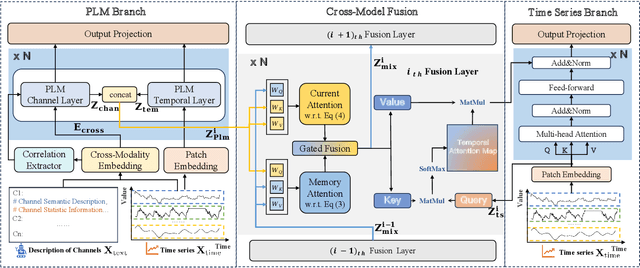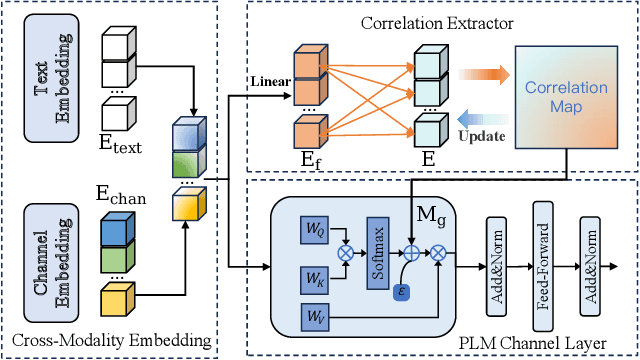Peng Chen
Tim
Tensor Completion via Monotone Inclusion: Generalized Low-Rank Priors Meet Deep Denoisers
Oct 14, 2025Abstract:Missing entries in multi dimensional data pose significant challenges for downstream analysis across diverse real world applications. These data are naturally modeled as tensors, and recent completion methods integrating global low rank priors with plug and play denoisers have demonstrated strong empirical performance. However, these approaches often rely on empirical convergence alone or unrealistic assumptions, such as deep denoisers acting as proximal operators of implicit regularizers, which generally does not hold. To address these limitations, we propose a novel tensor completion framework grounded in the monotone inclusion paradigm, which unifies generalized low rank priors with deep pseudo contractive denoisers and extends beyond traditional convex optimization. Building on the Davis Yin splitting scheme, we develop the GTCTV DPC algorithm and rigorously establish its global convergence. Extensive experiments demonstrate that GTCTV DPC consistently outperforms existing methods in both quantitative metrics and visual quality, particularly at low sampling rates.
Aurora: Towards Universal Generative Multimodal Time Series Forecasting
Sep 26, 2025Abstract:Cross-domain generalization is very important in Time Series Forecasting because similar historical information may lead to distinct future trends due to the domain-specific characteristics. Recent works focus on building unimodal time series foundation models and end-to-end multimodal supervised models. Since domain-specific knowledge is often contained in modalities like texts, the former lacks the explicit utilization of them, thus hindering the performance. The latter is tailored for end-to-end scenarios and does not support zero-shot inference for cross-domain scenarios. In this work, we introduce Aurora, a Multimodal Time Series Foundation Model, which supports multimodal inputs and zero-shot inference. Pretrained on Corss-domain Multimodal Time Series Corpus, Aurora can adaptively extract and focus on key domain knowledge contained in corrsponding text or image modalities, thus possessing strong Cross-domain generalization capability. Through tokenization, encoding, and distillation, Aurora can extract multimodal domain knowledge as guidance and then utilizes a Modality-Guided Multi-head Self-Attention to inject them into the modeling of temporal representations. In the decoding phase, the multimodal representations are used to generate the conditions and prototypes of future tokens, contributing to a novel Prototype-Guided Flow Matching for generative probabilistic forecasting. Comprehensive experiments on well-recognized benchmarks, including TimeMMD, TSFM-Bench and ProbTS, demonstrate the consistent state-of-the-art performance of Aurora on both unimodal and multimodal scenarios.
Hunyuan3D Studio: End-to-End AI Pipeline for Game-Ready 3D Asset Generation
Sep 16, 2025



Abstract:The creation of high-quality 3D assets, a cornerstone of modern game development, has long been characterized by labor-intensive and specialized workflows. This paper presents Hunyuan3D Studio, an end-to-end AI-powered content creation platform designed to revolutionize the game production pipeline by automating and streamlining the generation of game-ready 3D assets. At its core, Hunyuan3D Studio integrates a suite of advanced neural modules (such as Part-level 3D Generation, Polygon Generation, Semantic UV, etc.) into a cohesive and user-friendly system. This unified framework allows for the rapid transformation of a single concept image or textual description into a fully-realized, production-quality 3D model complete with optimized geometry and high-fidelity PBR textures. We demonstrate that assets generated by Hunyuan3D Studio are not only visually compelling but also adhere to the stringent technical requirements of contemporary game engines, significantly reducing iteration time and lowering the barrier to entry for 3D content creation. By providing a seamless bridge from creative intent to technical asset, Hunyuan3D Studio represents a significant leap forward for AI-assisted workflows in game development and interactive media.
Visual-CoG: Stage-Aware Reinforcement Learning with Chain of Guidance for Text-to-Image Generation
Aug 25, 2025Abstract:Despite the promising progress of recent autoregressive models in text-to-image (T2I) generation, their ability to handle multi-attribute and ambiguous prompts remains limited. To address these limitations, existing works have applied chain-of-thought (CoT) to enable stage-aware visual synthesis and employed reinforcement learning (RL) to improve reasoning capabilities. However, most models provide reward signals only at the end of the generation stage. This monolithic final-only guidance makes it difficult to identify which stages contribute positively to the final outcome and may lead to suboptimal policies. To tackle this issue, we propose a Visual-Chain of Guidance (Visual-CoG) paradigm consisting of three stages: semantic reasoning, process refining, and outcome evaluation, with stage-aware rewards providing immediate guidance throughout the image generation pipeline. We further construct a visual cognition benchmark, VisCog-Bench, which comprises four subtasks to evaluate the effectiveness of semantic reasoning. Comprehensive evaluations on GenEval, T2I-CompBench, and the proposed VisCog-Bench show improvements of 15%, 5%, and 19%, respectively, demonstrating the superior performance of the proposed Visual-CoG. We will release all the resources soon.
CC-Time: Cross-Model and Cross-Modality Time Series Forecasting
Aug 17, 2025



Abstract:With the success of pre-trained language models (PLMs) in various application fields beyond natural language processing, language models have raised emerging attention in the field of time series forecasting (TSF) and have shown great prospects. However, current PLM-based TSF methods still fail to achieve satisfactory prediction accuracy matching the strong sequential modeling power of language models. To address this issue, we propose Cross-Model and Cross-Modality Learning with PLMs for time series forecasting (CC-Time). We explore the potential of PLMs for time series forecasting from two aspects: 1) what time series features could be modeled by PLMs, and 2) whether relying solely on PLMs is sufficient for building time series models. In the first aspect, CC-Time incorporates cross-modality learning to model temporal dependency and channel correlations in the language model from both time series sequences and their corresponding text descriptions. In the second aspect, CC-Time further proposes the cross-model fusion block to adaptively integrate knowledge from the PLMs and time series model to form a more comprehensive modeling of time series patterns. Extensive experiments on nine real-world datasets demonstrate that CC-Time achieves state-of-the-art prediction accuracy in both full-data training and few-shot learning situations.
HunyuanWorld 1.0: Generating Immersive, Explorable, and Interactive 3D Worlds from Words or Pixels
Jul 29, 2025Abstract:Creating immersive and playable 3D worlds from texts or images remains a fundamental challenge in computer vision and graphics. Existing world generation approaches typically fall into two categories: video-based methods that offer rich diversity but lack 3D consistency and rendering efficiency, and 3D-based methods that provide geometric consistency but struggle with limited training data and memory-inefficient representations. To address these limitations, we present HunyuanWorld 1.0, a novel framework that combines the best of both worlds for generating immersive, explorable, and interactive 3D scenes from text and image conditions. Our approach features three key advantages: 1) 360{\deg} immersive experiences via panoramic world proxies; 2) mesh export capabilities for seamless compatibility with existing computer graphics pipelines; 3) disentangled object representations for augmented interactivity. The core of our framework is a semantically layered 3D mesh representation that leverages panoramic images as 360{\deg} world proxies for semantic-aware world decomposition and reconstruction, enabling the generation of diverse 3D worlds. Extensive experiments demonstrate that our method achieves state-of-the-art performance in generating coherent, explorable, and interactive 3D worlds while enabling versatile applications in virtual reality, physical simulation, game development, and interactive content creation.
Hunyuan3D 2.1: From Images to High-Fidelity 3D Assets with Production-Ready PBR Material
Jun 18, 2025Abstract:3D AI-generated content (AIGC) is a passionate field that has significantly accelerated the creation of 3D models in gaming, film, and design. Despite the development of several groundbreaking models that have revolutionized 3D generation, the field remains largely accessible only to researchers, developers, and designers due to the complexities involved in collecting, processing, and training 3D models. To address these challenges, we introduce Hunyuan3D 2.1 as a case study in this tutorial. This tutorial offers a comprehensive, step-by-step guide on processing 3D data, training a 3D generative model, and evaluating its performance using Hunyuan3D 2.1, an advanced system for producing high-resolution, textured 3D assets. The system comprises two core components: the Hunyuan3D-DiT for shape generation and the Hunyuan3D-Paint for texture synthesis. We will explore the entire workflow, including data preparation, model architecture, training strategies, evaluation metrics, and deployment. By the conclusion of this tutorial, you will have the knowledge to finetune or develop a robust 3D generative model suitable for applications in gaming, virtual reality, and industrial design.
Towards Robust Multimodal Emotion Recognition under Missing Modalities and Distribution Shifts
Jun 12, 2025Abstract:Recent advancements in Multimodal Emotion Recognition (MER) face challenges in addressing both modality missing and Out-Of-Distribution (OOD) data simultaneously. Existing methods often rely on specific models or introduce excessive parameters, which limits their practicality. To address these issues, we propose a novel robust MER framework, Causal Inference Distiller (CIDer), and introduce a new task, Random Modality Feature Missing (RMFM), to generalize the definition of modality missing. CIDer integrates two key components: a Model-Specific Self-Distillation (MSSD) module and a Model-Agnostic Causal Inference (MACI) module. MSSD enhances robustness under the RMFM task through a weight-sharing self-distillation approach applied across low-level features, attention maps, and high-level representations. Additionally, a Word-level Self-aligned Attention Module (WSAM) reduces computational complexity, while a Multimodal Composite Transformer (MCT) facilitates efficient multimodal fusion. To tackle OOD challenges, MACI employs a tailored causal graph to mitigate label and language biases using a Multimodal Causal Module (MCM) and fine-grained counterfactual texts. Notably, MACI can independently enhance OOD generalization with minimal additional parameters. Furthermore, we also introduce the new repartitioned MER OOD datasets. Experimental results demonstrate that CIDer achieves robust performance in both RMFM and OOD scenarios, with fewer parameters and faster training compared to state-of-the-art methods. The implementation of this work is publicly accessible at https://github.com/gw-zhong/CIDer.
LightGTS: A Lightweight General Time Series Forecasting Model
Jun 06, 2025Abstract:Existing works on general time series forecasting build foundation models with heavy model parameters through large-scale multi-source pre-training. These models achieve superior generalization ability across various datasets at the cost of significant computational burdens and limitations in resource-constrained scenarios. This paper introduces LightGTS, a lightweight general time series forecasting model designed from the perspective of consistent periodical modeling. To handle diverse scales and intrinsic periods in multi-source pre-training, we introduce Periodical Tokenization, which extracts consistent periodic patterns across different datasets with varying scales. To better utilize the periodicity in the decoding process, we further introduce Periodical Parallel Decoding, which leverages historical tokens to improve forecasting. Based on the two techniques above which fully leverage the inductive bias of periods inherent in time series, LightGTS uses a lightweight model to achieve outstanding performance on general time series forecasting. It achieves state-of-the-art forecasting performance on 9 real-world benchmarks in both zero-shot and full-shot settings with much better efficiency compared with existing time series foundation models.
Learning Cocoercive Conservative Denoisers via Helmholtz Decomposition for Poisson Inverse Problems
May 13, 2025Abstract:Plug-and-play (PnP) methods with deep denoisers have shown impressive results in imaging problems. They typically require strong convexity or smoothness of the fidelity term and a (residual) non-expansive denoiser for convergence. These assumptions, however, are violated in Poisson inverse problems, and non-expansiveness can hinder denoising performance. To address these challenges, we propose a cocoercive conservative (CoCo) denoiser, which may be (residual) expansive, leading to improved denoising. By leveraging the generalized Helmholtz decomposition, we introduce a novel training strategy that combines Hamiltonian regularization to promote conservativeness and spectral regularization to ensure cocoerciveness. We prove that CoCo denoiser is a proximal operator of a weakly convex function, enabling a restoration model with an implicit weakly convex prior. The global convergence of PnP methods to a stationary point of this restoration model is established. Extensive experimental results demonstrate that our approach outperforms closely related methods in both visual quality and quantitative metrics.
 Add to Chrome
Add to Chrome Add to Firefox
Add to Firefox Add to Edge
Add to Edge